LTC2852 Transceiver: Pinout, Equivalent and Datasheet
Linear Technology/Analog Devices
10 Terminations 3.3V 10 Pin LTC2852 Receivers 1 Bits 1/1 Drivers/Receivers 1 Functions









10 Terminations 3.3V 10 Pin LTC2852 Receivers 1 Bits 1/1 Drivers/Receivers 1 Functions
The LTC2852 is low power, 20Mbps RS485/RS422 transceiver operating on 3.3V supplies. The receiver has a one-eighth unit load supporting up to 256 nodes per bus (C-, I-grade), and a failsafe feature that guarantees a high output state under conditions of floating or shorted inputs. Furthermore, Huge range of Semiconductors, Capacitors, Resistors and IcS in stock. Welcome RFQ.
LTC2852 Pinout
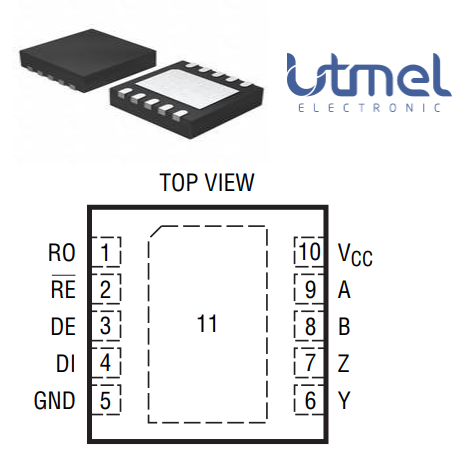
Pinout
LTC2852 CAD Model
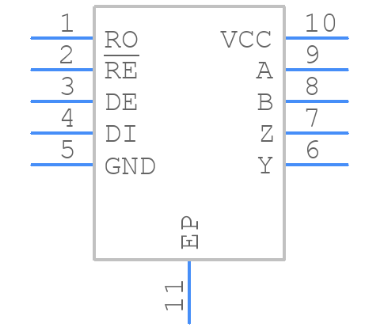
PCB Symbol

PCB Footprint

3D Model
LTC2852 Overview
The LTC2852 is low power, 20Mbps RS485/RS422 transceiver operating on 3.3V supplies. The receiver has a one-eighth unit load supporting up to 256 nodes per bus (C-, I-grade), and a failsafe feature that guarantees a high output state under conditions of floating or shorted inputs. The driver maintains a high output impedance over the entire common mode range when disabled or when the supply is removed. Excessive power dissipation caused by bus contention or a fault is prevented by current limiting all outputs and by thermal shutdown. Enhanced ESD protection allows these parts to withstand up to ±15kV (human body model) on the transceiver interface pins without latchup or damage.
This article provides you with a basic overview of the LTC2852 Transceiver, including its pin descriptions, features and specifications, etc., to help you quickly understand what LTC2852 is.
LTC2852 Features
● 3.3V Supply Voltage
● 20Mbps Maximum Data Rate
● No Damage or Latchup Up to ±15kV HBM
● High Input Impedance Supports 256 Nodes (C-, I-Grade)
● Operation Up to 125°C (H-Grade)
● Guaranteed Failsafe Receiver Operation Over the Entire Common Mode Range
● Current Limited Drivers and Thermal Shutdown
● Delayed Micropower Shutdown: 5µA Maximum (C-, I-Grade)
● Power Up/Down Glitch-Free Driver Outputs
● Low Operating Current: 370µA Typical in Receive Mode
● Compatible with TIA/EIA-485-A Specifications
● Available in 10-Pin 3mm × 3mm DFN, 10-Pin MSOP, and 14-Pin SO Packages
Specifications
- TypeParameter
- Lifecycle Status
Lifecycle Status refers to the current stage of an electronic component in its product life cycle, indicating whether it is active, obsolete, or transitioning between these states. An active status means the component is in production and available for purchase. An obsolete status indicates that the component is no longer being manufactured or supported, and manufacturers typically provide a limited time frame for support. Understanding the lifecycle status is crucial for design engineers to ensure continuity and reliability in their projects.
PRODUCTION (Last Updated: 1 month ago) - Factory Lead Time8 Weeks
- Mount
In electronic components, the term "Mount" typically refers to the method or process of physically attaching or fixing a component onto a circuit board or other electronic device. This can involve soldering, adhesive bonding, or other techniques to secure the component in place. The mounting process is crucial for ensuring proper electrical connections and mechanical stability within the electronic system. Different components may have specific mounting requirements based on their size, shape, and function, and manufacturers provide guidelines for proper mounting procedures to ensure optimal performance and reliability of the electronic device.
Surface Mount - Mounting Type
The "Mounting Type" in electronic components refers to the method used to attach or connect a component to a circuit board or other substrate, such as through-hole, surface-mount, or panel mount.
Surface Mount - Package / Case
refers to the protective housing that encases an electronic component, providing mechanical support, electrical connections, and thermal management.
10-WFDFN Exposed Pad - Number of Pins10
- Operating Temperature
The operating temperature is the range of ambient temperature within which a power supply, or any other electrical equipment, operate in. This ranges from a minimum operating temperature, to a peak or maximum operating temperature, outside which, the power supply may fail.
0°C~70°C - Packaging
Semiconductor package is a carrier / shell used to contain and cover one or more semiconductor components or integrated circuits. The material of the shell can be metal, plastic, glass or ceramic.
Tube - Published2006
- JESD-609 Code
The "JESD-609 Code" in electronic components refers to a standardized marking code that indicates the lead-free solder composition and finish of electronic components for compliance with environmental regulations.
e3 - Part Status
Parts can have many statuses as they progress through the configuration, analysis, review, and approval stages.
Active - Moisture Sensitivity Level (MSL)
Moisture Sensitivity Level (MSL) is a standardized rating that indicates the susceptibility of electronic components, particularly semiconductors, to moisture-induced damage during storage and the soldering process, defining the allowable exposure time to ambient conditions before they require special handling or baking to prevent failures
1 (Unlimited) - Number of Terminations10
- ECCN Code
An ECCN (Export Control Classification Number) is an alphanumeric code used by the U.S. Bureau of Industry and Security to identify and categorize electronic components and other dual-use items that may require an export license based on their technical characteristics and potential for military use.
EAR99 - TypeTransceiver
- Terminal Finish
Terminal Finish refers to the surface treatment applied to the terminals or leads of electronic components to enhance their performance and longevity. It can improve solderability, corrosion resistance, and overall reliability of the connection in electronic assemblies. Common finishes include nickel, gold, and tin, each possessing distinct properties suitable for various applications. The choice of terminal finish can significantly impact the durability and effectiveness of electronic devices.
Matte Tin (Sn) - Voltage - Supply
Voltage - Supply refers to the range of voltage levels that an electronic component or circuit is designed to operate with. It indicates the minimum and maximum supply voltage that can be applied for the device to function properly. Providing supply voltages outside this range can lead to malfunction, damage, or reduced performance. This parameter is critical for ensuring compatibility between different components in a circuit.
3V~3.6V - Terminal Position
In electronic components, the term "Terminal Position" refers to the physical location of the connection points on the component where external electrical connections can be made. These connection points, known as terminals, are typically used to attach wires, leads, or other components to the main body of the electronic component. The terminal position is important for ensuring proper connectivity and functionality of the component within a circuit. It is often specified in technical datasheets or component specifications to help designers and engineers understand how to properly integrate the component into their circuit designs.
DUAL - Terminal Form
Occurring at or forming the end of a series, succession, or the like; closing; concluding.
NO LEAD - Peak Reflow Temperature (Cel)
Peak Reflow Temperature (Cel) is a parameter that specifies the maximum temperature at which an electronic component can be exposed during the reflow soldering process. Reflow soldering is a common method used to attach electronic components to a circuit board. The Peak Reflow Temperature is crucial because it ensures that the component is not damaged or degraded during the soldering process. Exceeding the specified Peak Reflow Temperature can lead to issues such as component failure, reduced performance, or even permanent damage to the component. It is important for manufacturers and assemblers to adhere to the recommended Peak Reflow Temperature to ensure the reliability and functionality of the electronic components.
260 - Number of Functions1
- Supply Voltage
Supply voltage refers to the electrical potential difference provided to an electronic component or circuit. It is crucial for the proper operation of devices, as it powers their functions and determines performance characteristics. The supply voltage must be within specified limits to ensure reliability and prevent damage to components. Different electronic devices have specific supply voltage requirements, which can vary widely depending on their design and intended application.
3.3V - Terminal Pitch
The center distance from one pole to the next.
0.5mm - Time@Peak Reflow Temperature-Max (s)
Time@Peak Reflow Temperature-Max (s) refers to the maximum duration that an electronic component can be exposed to the peak reflow temperature during the soldering process, which is crucial for ensuring reliable solder joint formation without damaging the component.
30 - Base Part Number
The "Base Part Number" (BPN) in electronic components serves a similar purpose to the "Base Product Number." It refers to the primary identifier for a component that captures the essential characteristics shared by a group of similar components. The BPN provides a fundamental way to reference a family or series of components without specifying all the variations and specific details.
LTC2852 - Pin Count
a count of all of the component leads (or pins)
10 - Qualification Status
An indicator of formal certification of qualifications.
Not Qualified - Operating Supply Voltage
The voltage level by which an electrical system is designated and to which certain operating characteristics of the system are related.
3.3V - Interface
In electronic components, the term "Interface" refers to the point at which two different systems, devices, or components connect and interact with each other. It can involve physical connections such as ports, connectors, or cables, as well as communication protocols and standards that facilitate the exchange of data or signals between the connected entities. The interface serves as a bridge that enables seamless communication and interoperability between different parts of a system or between different systems altogether. Designing a reliable and efficient interface is crucial in ensuring proper functionality and performance of electronic components and systems.
RS-422, RS-485 - Nominal Supply Current
Nominal current is the same as the rated current. It is the current drawn by the motor while delivering rated mechanical output at its shaft.
1mA - Data Rate
Data Rate is defined as the amount of data transmitted during a specified time period over a network. It is the speed at which data is transferred from one device to another or between a peripheral device and the computer. It is generally measured in Mega bits per second(Mbps) or Mega bytes per second(MBps).
20Mbps - Differential Output
a differential output voltage in electronics is the difference between the values of two AC voltages, 180° out of phase, present at the output terminals of an amplifier when you apply a differential input voltage to the input terminals of an amplifier.
YES - Protocol
In electronic components, the parameter "Protocol" refers to a set of rules and standards that govern the communication between devices. It defines the format, timing, sequencing, and error checking methods for data exchange between different components or systems. Protocols ensure that devices can understand and interpret data correctly, enabling them to communicate effectively with each other. Common examples of protocols in electronics include USB, Ethernet, SPI, I2C, and Bluetooth, each with its own specifications for data transmission. Understanding and adhering to protocols is essential for ensuring compatibility and reliable communication between electronic devices.
RS422, RS485 - Input Characteristics
In electronic components, "Input Characteristics" refer to the set of specifications that describe how the component behaves in response to signals or inputs applied to it. These characteristics typically include parameters such as input voltage, input current, input impedance, input capacitance, and input frequency range. Understanding the input characteristics of a component is crucial for designing circuits and systems, as it helps ensure compatibility and proper functioning. By analyzing these parameters, engineers can determine how the component will interact with the signals it receives and make informed decisions about its use in a particular application.
DIFFERENTIAL SCHMITT TRIGGER - Number of Drivers/Receivers1/1
- Driver Number of Bits1
- Receiver Number of Bits1
- Duplex
In the context of electronic components, "Duplex" refers to a type of communication system that allows for bidirectional data flow. It enables two devices to communicate with each other simultaneously, allowing for both sending and receiving of data at the same time. Duplex communication can be further categorized into two types: half-duplex, where data can be transmitted in both directions but not at the same time, and full-duplex, where data can be sent and received simultaneously. This parameter is crucial in networking and telecommunications systems to ensure efficient and effective data transmission between devices.
Full - Receiver Hysteresis
Receiver hysteresis is?commonly used to ensure glitch-free reception even when differential noise is present. This application report compares the noise immunity of the SN65HVD37 to similar devices available from competitors. Contents.
25mV - Number of Transceivers1
- Receive Delay-Max
Receive Delay-Max is a parameter in electronic components that refers to the maximum amount of time it takes for a device to receive and process incoming signals or data after they have been transmitted. This parameter is crucial in determining the overall performance and efficiency of the component, especially in applications where timing is critical. A lower Receive Delay-Max value indicates faster response times and better overall performance, while a higher value may result in delays and potential issues in data transmission. It is important to consider and optimize the Receive Delay-Max parameter when designing or selecting electronic components for specific applications to ensure reliable and efficient operation.
70 ns - Transmit Delay-Max
Transmit Delay-Max refers to the maximum time interval it takes for a signal to be transmitted from the input to the output of an electronic component or system. This parameter is critical in digital circuits and communication systems, as it affects the overall performance and timing of data transmission. A lower Transmit Delay-Max indicates faster signal propagation, which is essential for high-speed applications. It is typically specified in nanoseconds or microseconds, depending on the technology and design of the component.
50 ns - Output Low Current-Max
Output Low Current-Max is a parameter in electronic components that specifies the maximum amount of current that can flow out of the output pin when it is in a low state. This parameter is important for determining the capability of the component to sink current when driving external loads. It is typically measured in units of amperes (A) and helps in ensuring that the component can effectively drive connected devices without being damaged. Designers use this parameter to ensure proper functioning and reliability of the overall circuit by selecting components with appropriate output low current-max ratings.
0.004A - Out Swing-Min
Out Swing-Min is a parameter in electronic components that indicates the minimum voltage level that an output signal can reach when the device is in a low state. It is critical for determining the output swing of digital circuits, particularly in logic devices and amplifiers. This parameter helps to ensure that the output can properly drive the subsequent stage of a circuit or meet the logic level requirements of connected components. A lower Out Swing-Min value may enhance compatibility with other devices in terms of signal integrity.
2 V - Length3mm
- Height Seated (Max)
Height Seated (Max) is a parameter in electronic components that refers to the maximum allowable height of the component when it is properly seated or installed on a circuit board or within an enclosure. This specification is crucial for ensuring proper fit and alignment within the overall system design. Exceeding the maximum seated height can lead to mechanical interference, electrical shorts, or other issues that may impact the performance and reliability of the electronic device. Manufacturers provide this information to help designers and engineers select components that will fit within the designated space and function correctly in the intended application.
0.8mm - Width3mm
- REACH SVHC
The parameter "REACH SVHC" in electronic components refers to the compliance with the Registration, Evaluation, Authorization, and Restriction of Chemicals (REACH) regulation regarding Substances of Very High Concern (SVHC). SVHCs are substances that may have serious effects on human health or the environment, and their use is regulated under REACH to ensure their safe handling and minimize their impact.Manufacturers of electronic components need to declare if their products contain any SVHCs above a certain threshold concentration and provide information on the safe use of these substances. This information allows customers to make informed decisions about the potential risks associated with using the components and take appropriate measures to mitigate any hazards.Ensuring compliance with REACH SVHC requirements is essential for electronics manufacturers to meet regulatory standards, protect human health and the environment, and maintain transparency in their supply chain. It also demonstrates a commitment to sustainability and responsible manufacturing practices in the electronics industry.
No SVHC - RoHS Status
RoHS means “Restriction of Certain Hazardous Substances” in the “Hazardous Substances Directive” in electrical and electronic equipment.
ROHS3 Compliant - Lead Free
Lead Free is a term used to describe electronic components that do not contain lead as part of their composition. Lead is a toxic material that can have harmful effects on human health and the environment, so the electronics industry has been moving towards lead-free components to reduce these risks. Lead-free components are typically made using alternative materials such as silver, copper, and tin. Manufacturers must comply with regulations such as the Restriction of Hazardous Substances (RoHS) directive to ensure that their products are lead-free and environmentally friendly.
Lead Free
LTC2852 Functional Block Diagram

Block Diagram
LTC2852 Equivalent
| Model number | Manufacturer | Description |
| LTC2852MPDD#TRPBF | Linear Technology | LTC2852 - 3.3V 20Mbps RS485/RS422 Transceiver; Package: DFN; Pins: 10; Temperature Range: -55°C to 125°C |
| LTC2852IDD#TRPBF | Analog Devices Inc | 3.3V 20Mbps RS485/RS422 Transceiver |
| LTC2852CDD#TRPBF | Linear Technology | LTC2852 - 3.3V 20Mbps RS485/RS422 Transceiver; Package: DFN; Pins: 10; Temperature Range: 0°C to 70°C |
| LTC2852CDD | Analog Devices Inc | Line Transceiver, 1 Func, 1 Driver, 1 Rcvr, PDSO10 |
| LTC2852CDD#TR | Linear Technology | IC LINE TRANSCEIVER, PDSO10, 3 X 3 MM, PLASTIC, MO-229WEED-2, DFN-10, Line Driver or Receiver |
| LTC2852HDD#PBF | Linear Technology | LTC2852 - 3.3V 20Mbps RS485/RS422 Transceiver; Package: DFN; Pins: 10; Temperature Range: -40°C to 125°C |
| LTC2852IDD | Linear Technology | IC LINE TRANSCEIVER, PDSO10, 3 X 3 MM, PLASTIC, MO-229WEED-2, DFN-10, Line Driver or Receiver |
| LTC2852IDD#TR | Linear Technology | IC LINE TRANSCEIVER, PDSO10, 3 X 3 MM, PLASTIC, MO-229WEED-2, DFN-10, Line Driver or Receiver |
| LTC2852IDD#PBF | Analog Devices Inc | 3.3V 20Mbps RS485/RS422 Transceiver |
| LTC2852CDD#PBF | Linear Technology | LTC2852 - 3.3V 20Mbps RS485/RS422 Transceiver; Package: DFN; Pins: 10; Temperature Range: 0°C to 70°C |
Parts with Similar Specs
- ImagePart NumberManufacturerPackage / CaseNumber of PinsInterfaceDriver Number of BitsReceiver Number of BitsData RateSupply VoltageNumber of Drivers/ReceiversView Compare
LTC2852CDD#PBF
10-WFDFN Exposed Pad
10
RS-422, RS-485
1
1
20Mbps
3.3 V
1/1
10-WFDFN Exposed Pad
10
-
1
1
20Mbps
3.3 V
1/1
12-WFDFN Exposed Pad
12
-
1
1
20Mbps
3.3 V
1/1
8-VDFN Exposed Pad
8
CAN
-
-
8Mbps
5 V
1/1
LTC2852 Applications
● Low Power RS485/RS422 Transceiver
● Level Translator
● Backplane Transceiver
LTC2852 Package

Package
LTC2852 Manufacturer
As a member of the S&P 500, Linear Technology Corporation is committed to designing, manufacturing and marketing a extensive line of high performance analog integrated circuits for main companies around the world. Between the analog world and digital electronic products in communications, networks, industry, automobiles, computers, medical, instrumentation, consumer, military and aerospace systems, our products have built an important bridge for them. Our products include not only the production of power management, data conversion, signal conditioning, RF and interface ICs, μModule subsystems, but also wireless sensor network products.
Datasheet PDF
- Datasheets :
- PCN Design/Specification :
- ConflictMineralStatement :
Trend Analysis
How does the LTC2852 receiver guarantee a high output state under floating or short input conditions?
The receiver has a one-eighth unit load supporting up to 256 nodes per bus (C-, I-grade), and a failsafe feature that guarantees a high output state under conditions of floating or shorted inputs.
When power is disabled or removed, how should the driver prevent excessive power consumption due to bus contention or failure?
The driver maintains a high output impedance over the entire common mode range when disabled or when the supply is removed. Excessive power dissipation caused by bus contention or a fault is prevented by current limiting all outputs and by thermal shutdown.
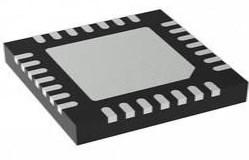 TMC2208 Power Driver: Pinout, Datasheet and Circuit
TMC2208 Power Driver: Pinout, Datasheet and Circuit12 July 20216151
 onsemi BCP54 Guide for Amplifier and Switching Circuits
onsemi BCP54 Guide for Amplifier and Switching Circuits19 August 202580
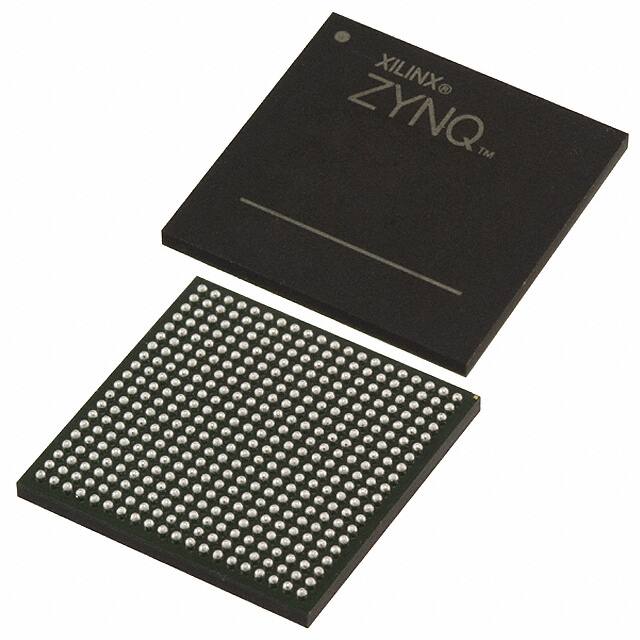 Comprehensive Guide to XC7Z010-1CLG400C Specifications and Features
Comprehensive Guide to XC7Z010-1CLG400C Specifications and Features21 February 2025580
 MSP430C11x1/ MSP430F11x1A Mixed Signal Microcontroller: Technical Overview and Specifications
MSP430C11x1/ MSP430F11x1A Mixed Signal Microcontroller: Technical Overview and Specifications29 February 202493
![Difference Between TDA7293 vs. TDA7294 Audio Amplifier [Video&FAQ]](https://res.utmel.com/Images/Article/41907ba9-f2a7-4f40-a251-a6196e5ae69f.jpg) Difference Between TDA7293 vs. TDA7294 Audio Amplifier [Video&FAQ]
Difference Between TDA7293 vs. TDA7294 Audio Amplifier [Video&FAQ]24 April 202222688
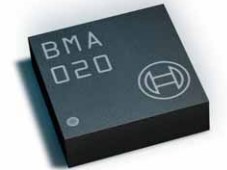 BMA020 Acceleration Sensor: Features, Specification and Datasheet
BMA020 Acceleration Sensor: Features, Specification and Datasheet14 August 2024567
 XCF04SVOG20C: Overview, Features, and Applications
XCF04SVOG20C: Overview, Features, and Applications04 December 2023612
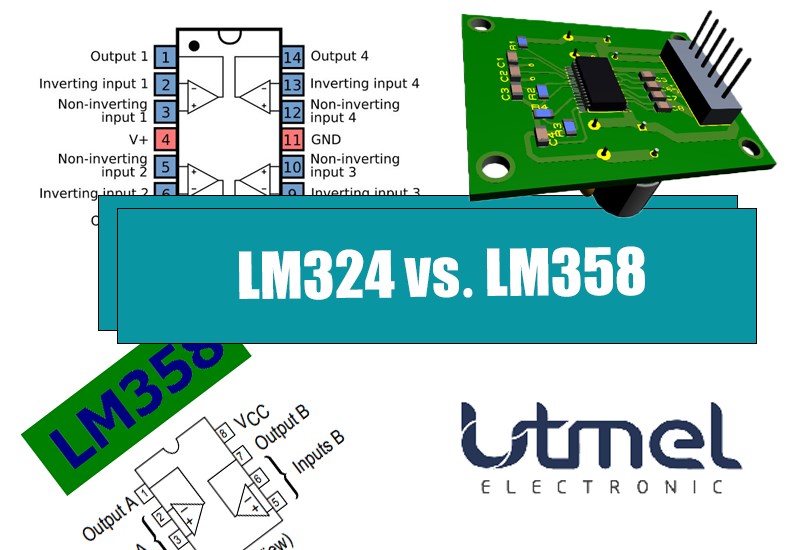 LM324 vs LM358 : Which one is better?
LM324 vs LM358 : Which one is better?02 March 20226138
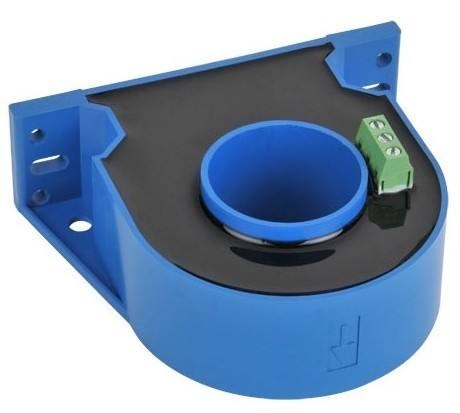 Classification of Current Sensors
Classification of Current Sensors18 November 20253289
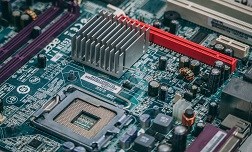 What is Gallium nitride (GaN) and where can we use it?
What is Gallium nitride (GaN) and where can we use it?23 April 20223989
 Latest MLPerf Results: NVIDIA H100 GPUs Ride to the Top
Latest MLPerf Results: NVIDIA H100 GPUs Ride to the Top13 September 20222319
 Voltage Follower: Purpose, Working, and Circuits
Voltage Follower: Purpose, Working, and Circuits27 March 202525348
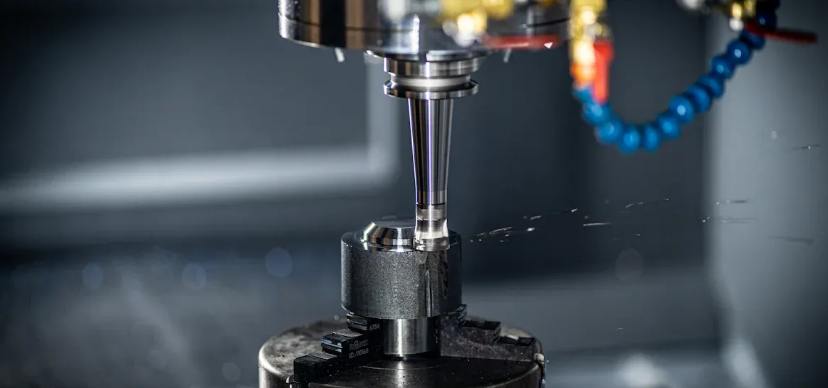 Top 10 High-Performance End Mills for Metalworking in 2025
Top 10 High-Performance End Mills for Metalworking in 202517 July 20251132
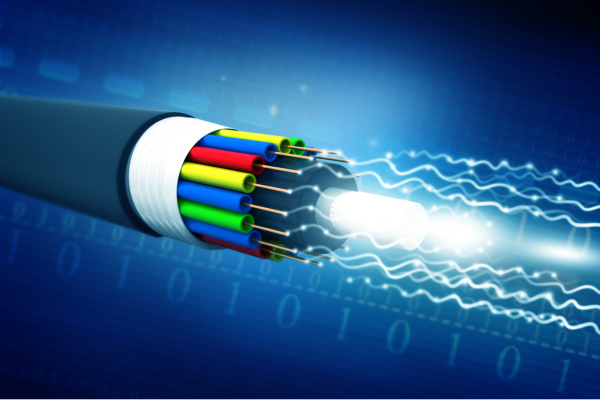 Role of On-Chip Optical Communication in Overcoming CMOS Scaling Challenges
Role of On-Chip Optical Communication in Overcoming CMOS Scaling Challenges22 August 20241907
 Eight Internet of Things (IoT) Trends for 2022
Eight Internet of Things (IoT) Trends for 202208 April 20223382
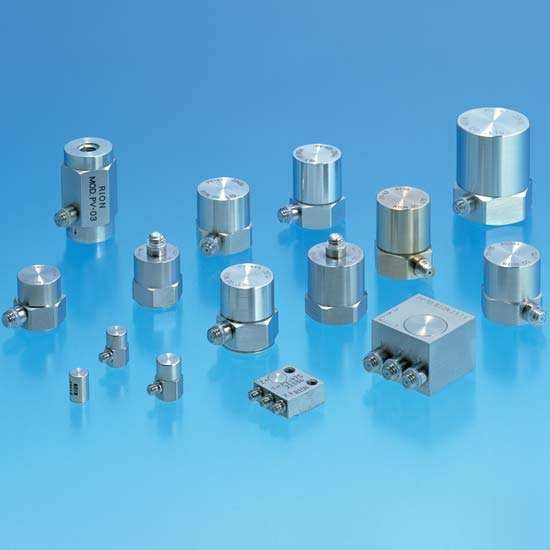 What is a Vibration Sensor?
What is a Vibration Sensor?24 October 20252721
Linear Technology/Analog Devices
In Stock
United States
China
Canada
Japan
Russia
Germany
United Kingdom
Singapore
Italy
Hong Kong(China)
Taiwan(China)
France
Korea
Mexico
Netherlands
Malaysia
Austria
Spain
Switzerland
Poland
Thailand
Vietnam
India
United Arab Emirates
Afghanistan
Åland Islands
Albania
Algeria
American Samoa
Andorra
Angola
Anguilla
Antigua & Barbuda
Argentina
Armenia
Aruba
Australia
Azerbaijan
Bahamas
Bahrain
Bangladesh
Barbados
Belarus
Belgium
Belize
Benin
Bermuda
Bhutan
Bolivia
Bonaire, Sint Eustatius and Saba
Bosnia & Herzegovina
Botswana
Brazil
British Indian Ocean Territory
British Virgin Islands
Brunei
Bulgaria
Burkina Faso
Burundi
Cabo Verde
Cambodia
Cameroon
Cayman Islands
Central African Republic
Chad
Chile
Christmas Island
Cocos (Keeling) Islands
Colombia
Comoros
Congo
Congo (DRC)
Cook Islands
Costa Rica
Côte d’Ivoire
Croatia
Cuba
Curaçao
Cyprus
Czechia
Denmark
Djibouti
Dominica
Dominican Republic
Ecuador
Egypt
El Salvador
Equatorial Guinea
Eritrea
Estonia
Eswatini
Ethiopia
Falkland Islands
Faroe Islands
Fiji
Finland
French Guiana
French Polynesia
Gabon
Gambia
Georgia
Ghana
Gibraltar
Greece
Greenland
Grenada
Guadeloupe
Guam
Guatemala
Guernsey
Guinea
Guinea-Bissau
Guyana
Haiti
Honduras
Hungary
Iceland
Indonesia
Iran
Iraq
Ireland
Isle of Man
Israel
Jamaica
Jersey
Jordan
Kazakhstan
Kenya
Kiribati
Kosovo
Kuwait
Kyrgyzstan
Laos
Latvia
Lebanon
Lesotho
Liberia
Libya
Liechtenstein
Lithuania
Luxembourg
Macao(China)
Madagascar
Malawi
Maldives
Mali
Malta
Marshall Islands
Martinique
Mauritania
Mauritius
Mayotte
Micronesia
Moldova
Monaco
Mongolia
Montenegro
Montserrat
Morocco
Mozambique
Myanmar
Namibia
Nauru
Nepal
New Caledonia
New Zealand
Nicaragua
Niger
Nigeria
Niue
Norfolk Island
North Korea
North Macedonia
Northern Mariana Islands
Norway
Oman
Pakistan
Palau
Palestinian Authority
Panama
Papua New Guinea
Paraguay
Peru
Philippines
Pitcairn Islands
Portugal
Puerto Rico
Qatar
Réunion
Romania
Rwanda
Samoa
San Marino
São Tomé & Príncipe
Saudi Arabia
Senegal
Serbia
Seychelles
Sierra Leone
Sint Maarten
Slovakia
Slovenia
Solomon Islands
Somalia
South Africa
South Sudan
Sri Lanka
St Helena, Ascension, Tristan da Cunha
St. Barthélemy
St. Kitts & Nevis
St. Lucia
St. Martin
St. Pierre & Miquelon
St. Vincent & Grenadines
Sudan
Suriname
Svalbard & Jan Mayen
Sweden
Syria
Tajikistan
Tanzania
Timor-Leste
Togo
Tokelau
Tonga
Trinidad & Tobago
Tunisia
Turkey
Turkmenistan
Turks & Caicos Islands
Tuvalu
U.S. Outlying Islands
U.S. Virgin Islands
Uganda
Ukraine
Uruguay
Uzbekistan
Vanuatu
Vatican City
Venezuela
Wallis & Futuna
Yemen
Zambia
Zimbabwe











